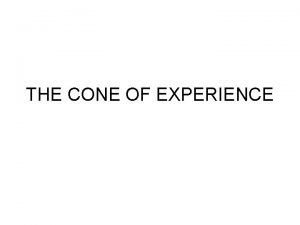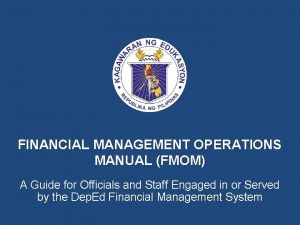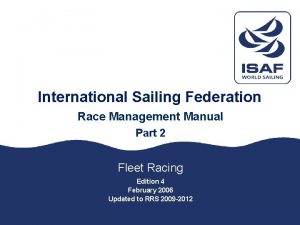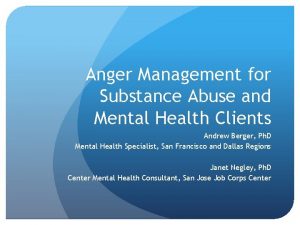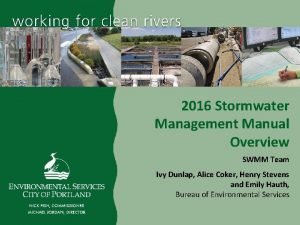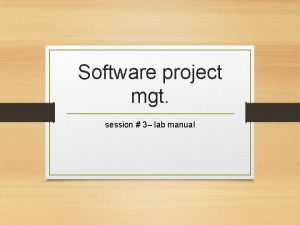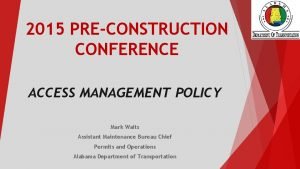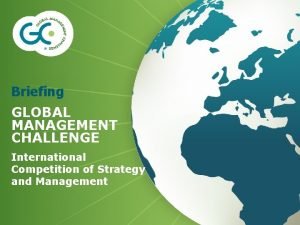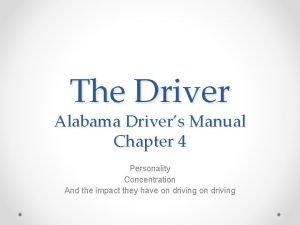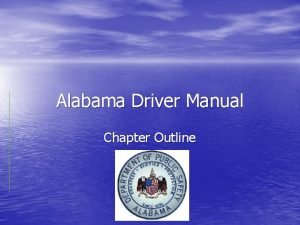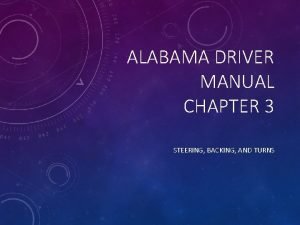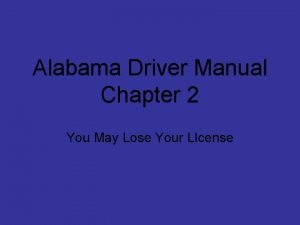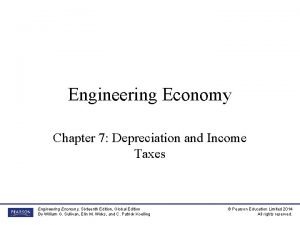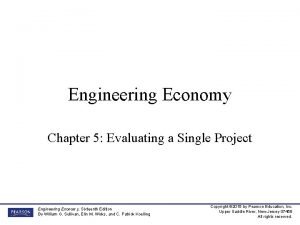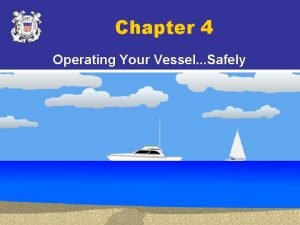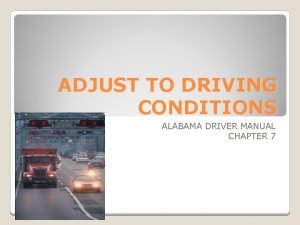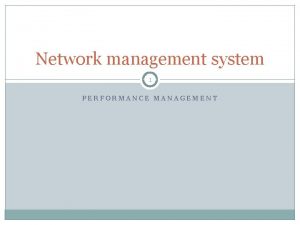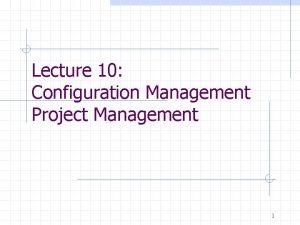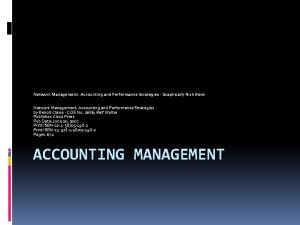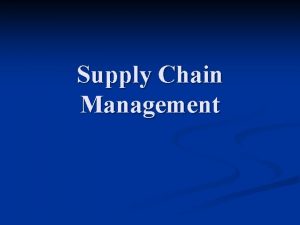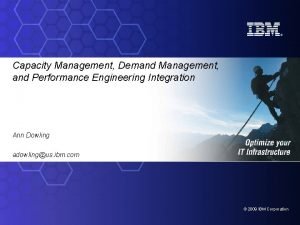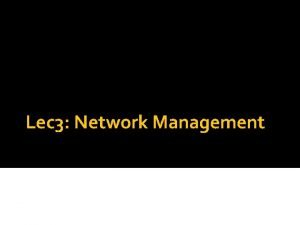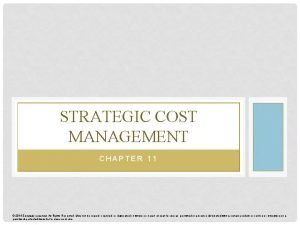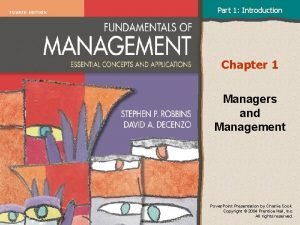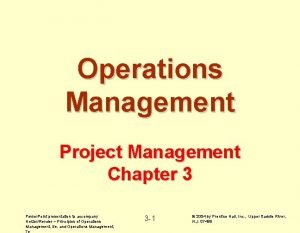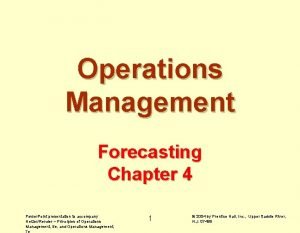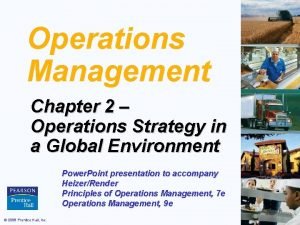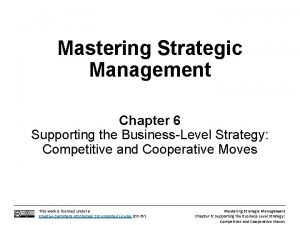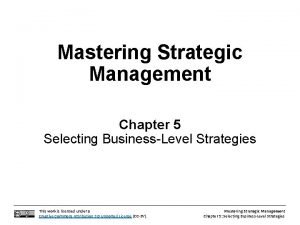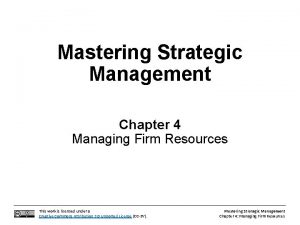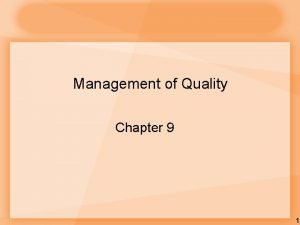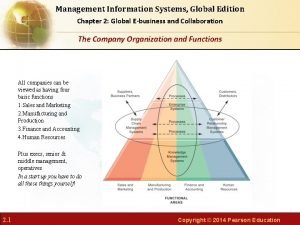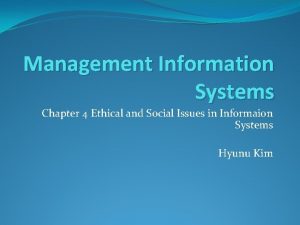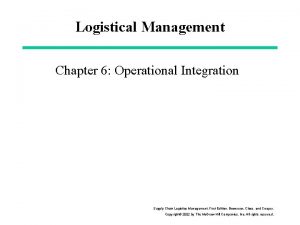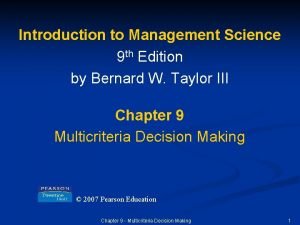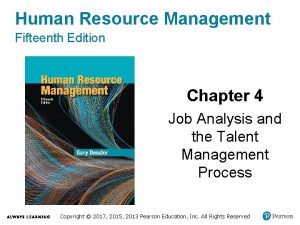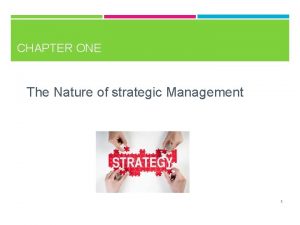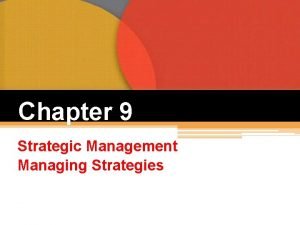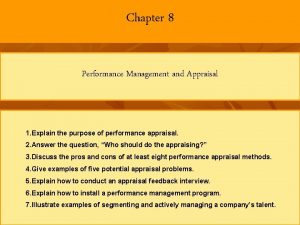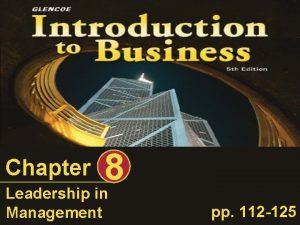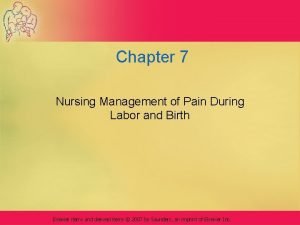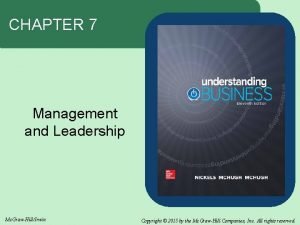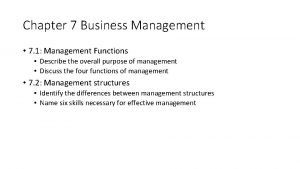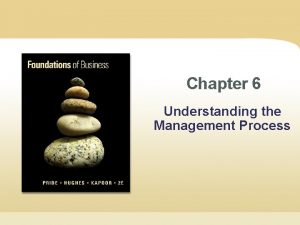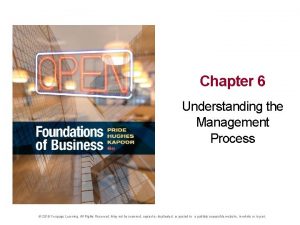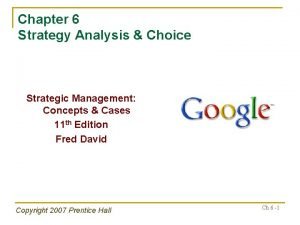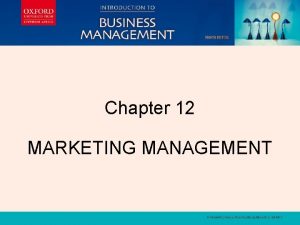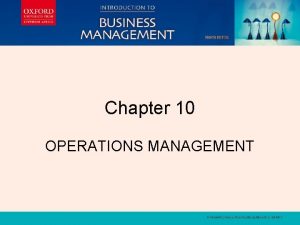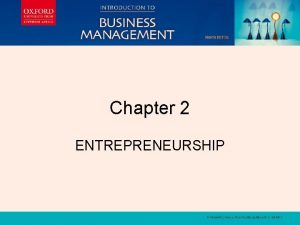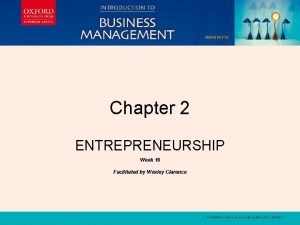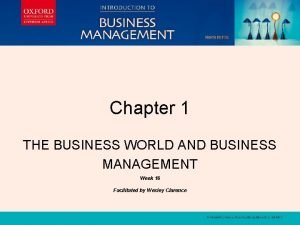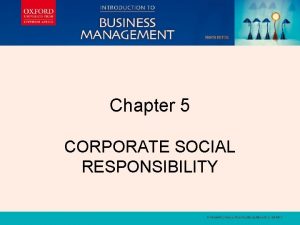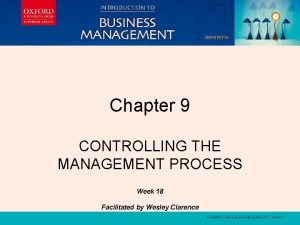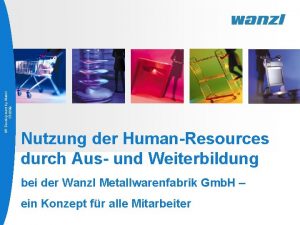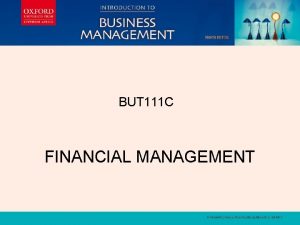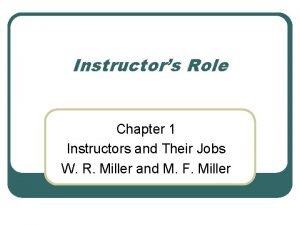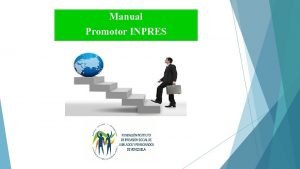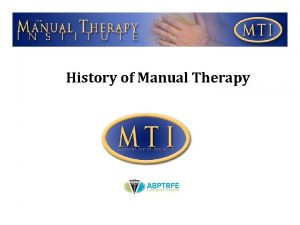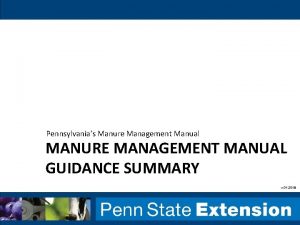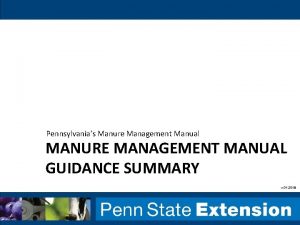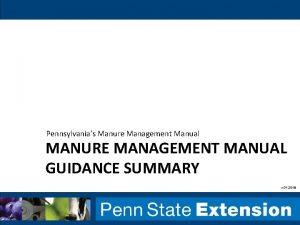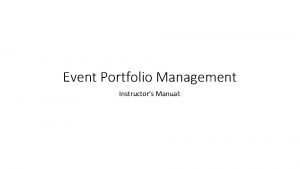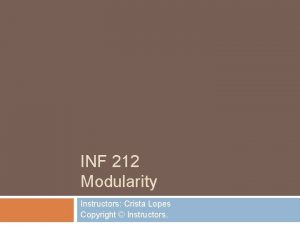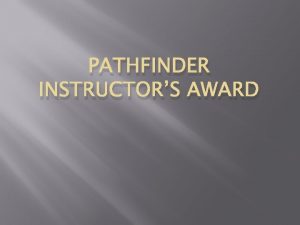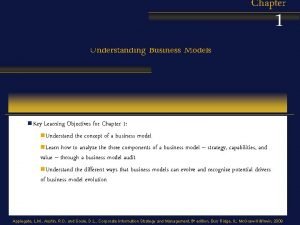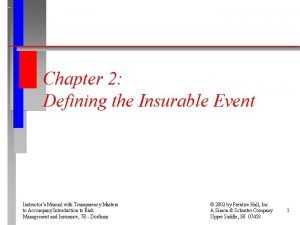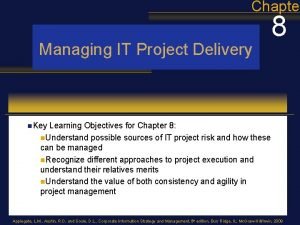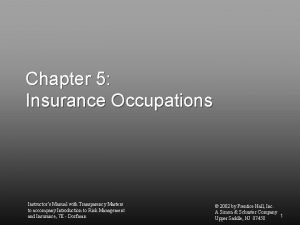INSTRUCTORS MANUAL Chapter 11 INSTRUCTORS MANUAL HUMANRESOURCES MANAGEMENT

















































































- Slides: 81

INSTRUCTOR'S MANUAL Chapter 11 INSTRUCTOR'S MANUAL HUMAN-RESOURCES MANAGEMENT AND THE SA LABOUR LEGISLATIVE FRAMEWORK

Outcomes • The relationship between line management and the human-resources department • Process involved in HR planning • Finding qualified workers • Developing qualified workers • Keeping qualified workers • Motivating employees • Labour legislation that impacts the workplace

Introduction § What separates top-performing companies from their competitors is the way they treat their workforce. § Companies that invest in their employees create long-lasting competitive advantages § The process of finding, developing and keeping the right people to form a qualified workforce remains one of the most difficult and most important of all management tasks

COMPETITIVE ADVANTAGE THROUGH EMPLOYEES

The role of HR management in the organisation • Crucial element in organisational success o Role of the human resources function o Human-resources management o Organisational effectiveness o Who performs the human-resources function

The HR function • Main role is the strategic partner = show the org strategy regarding people. • Labour productivity has to be addressed for SA to be productive in the global market • Improve skills-base of employees = more profitability. • Legal environment – accountability (NB!) • Importance of recruiting, selecting, training, developing, rewarding, assisting and motivation employees • Focus on integration and teamwork of employees , which leads to…. • Job satisfaction


HR management and organisational effectiveness • Effective organisations must have vision, a mission and a strategy • People create ideas, and help companies prosper • Successful companies have following attributes: o o o A participative style of management Communication with all levels of employees Promotion from within Training of employees Rewarding of good work

HR management and organisational effectiveness • For org. to be really effective, HR must be key element. • Contribution of HR to organisational effectiveness should include: o o o o Assisting everybody to reach goals Efficient use of skills and abilities Training and motivating employees Job satisfaction and self-actualisation Desirable quality of working life Maintaining ethical policies and socially responsible behaviour Managing change to advantage of individuals and public Executing HR functions in professional manner

How can you be effective?

Who performs the HR function? • • HR specialist – help person do their job asap. HR department – works with employees If no HR? - Line managers and direct supervisors A human resources specialist is normally employed in organisations with 50 to 150 employees • A human resources department is typically created when the number of employees reaches a figure of between 200 and 500.

HR planning • Process of using org goals and strategy to forecast the org HR needs in terms of finding, developing and keeping qualified workforce

HR planning steps Step 1: Identify the work being done in the business presently. Job analysis and job description Step 2: Identify the type of employees needed to do the work Job specification Step 3: Identify number of employees needed in future HR forecasting and planning

Job Analysis • First step: To determine the nature of the work being done • Job analysis: Process of describing and recording information about job behaviours and activities • What questions should be asked when doing a job analysis? • Information can be collected by: • Observation by a qualified job analyst • Video taping, audiotaping, electronic monitoring • Administrative work – interviewing • Questionnaires (Answer specific questions about job)

Job Description • Information from job analysis put into writing in a certain format = job description • Usually prepared in predetermined format that is easily readable. • Starts with a summary of the job • Followed by a brief description of each main task • Practical examples and subdivisions • This document can differ from business to business


Job Specification • Personal qualifications of employee in order to perform the duties in the job description • Indicates the knowledge, skills, abilities relevant to the job, includes: • education, specialised training, personal traits & • Physical demands


Human resource forecasting • Do forecasts of quantity and quality of employees the business will need in the future • To balance the HR supply with the HR demand • Factors to consider: • • • Economic growth (exp growth of business) New developments in business (new branches? ) Labour market (sufficient opportunities)

HR PLAN • Final step in HR planning process • Purpose: to provide concrete guidelines and steps that indicate how the business’s short, medium and long-term HR requirements can be provided for • Should dovetail (merge/ unite) with the strategic plan • In the end, HR plan makes provision for an active recruiting campaign, etc…

Recruiting: Layout…. • • Recruitment from inside Recruitment from outside The recruitment procedure Recruiting techniques o o o Recruitment through advertisements Recruitment through consultants and labour agencies Recruitment through exisitng employees Recruitment though personal approach Recruitment through radio, TV and the internet Sundry recruiting strategies

FINDING QUALIFIED WORKERS • Recruiting: • • To ensure that a sufficient number of applicants apply for various jobs in the business as and when required Two basic sources Inside the organisation Outside the organisation

FINDING QUALIFIED WORKERS • Recruitment from inside: (internal recruiting) • • • Trying to fill positions using existing staff People from outside only appointed at lowest levels Senior jobs filled by means of promotion When a job at a very senior level becomes vacant, the result is a whole series of promotions Advantages and disadvantages

Advantages: • Career planning becomes possible, there is a future for me in this business • Assessment of applicants is easier. . • Cost of recruitment is lower – no ads needed

Disadvantages • Business can stagnate – no new “blood” and ideas • Staff in lower positions, don’t always have ability to fill more senior positions. • Personal competition between employees. Can influence co-operation.

FINDING QUALIFIED WORKERS • Recruitment from outside : External recruiting • Advantages and disadvantages p. 297 • Most business use a combination of both internal and external recruitment in one of two ways: • • First look inside. Only look outside if you cannot find a suitable candidate Advertise all jobs above a certain level and allow existing staff to apply

Recruiting procedure • Record-system is needed when recruiting from the inside: • HRIS – Human Resource Info System • • • HRIS – details of all employees. When a job becomes vacant, the HR manager can identify suitable candidates Outside recruitment: Ideal is that only suitable candidates apply Requires a thorough analysis of the labour market

Labour market? Social or geographical area from which a business draws its employees. Every labour market has unique characteristics SA labour market: Relationship between skilled and unskilled workers is unbalanced Recruit effectively = good for the org.

Recruiting techniques • Recruiting through advertisements: • Costly $$$ (Use professionals if you can afford) • Must be in line with Labour Relations Act and Employment Equity Act – words must be neutral • Give specifics – better chances of getting “RIGHT” applicants • Indicate remuneration – Salary • Recruiting through Consultants/labour agencies: • Suitable for smaller businesses • Undertakes preliminary selection and recruitment • Recommends two or three applicants. .

Recruiting techniques • Through existing employees: • Employees asked to recruit friends or acquintances • If staff feel positively about their work, they will more easily persuade others to apply • No need for advertisements • Through personal approach: • Head-hunting • An individual known personally to the management • Saves recruiting costs • Selection process takes place before recruitment process

Recruiting techniques • Through Radio, TV and the Internet: • Costly/not used often in South Africa • Internet more widely used, e. g. careerjet , careers 24. com etc… • Other strategies: • Visiting schools, universities to recruit students • Allocation of student bursaries with a compulsory period of service • Participation in career exhibitions • Distribution of general recruitment brochures

Selection • We are going to look at: • Preliminary screening – very short interview • Intensive assessment o o Psychological testing Diagnostic interview • Final selection • Placement and induction • Look figure 11. 2 p. 300: Steps in a typical selection process

Preliminary screening • Compare the application with the job specification • Application form should require: • Personal details – name, address…. • Work history – jobs held previously • References • Significant achievements • What should be answered by the application form? • P. 301 Questions… • Next step is a short interview – general opinion of applicant based on appearance, articulateness and self -confidence ( step 2)

Intensive assessment • Two steps: • Psychological testing Measure applicant’s personality, abilities, management skills. Must ensure tests are not culturally biased (steps 3 & 4) • Diagnostic interviewing Looks for certain characteristics by asking specific questions. See examples in textbook Can’t be discriminatory. May not ask questions about the person’s religious convictions or sexual preferences (step 6)

Final Selection • Enough information to compile a short list of candidates • HR manager must consult their references • Useful to interview all three again, record their strengths and weaknesses • Most suitable candidate is offered the job • Advise them of conditions of employment • Might have to undergo medical examination

Placement and induction • New employee must report for duty as soon as possible • Copies of documents and certificates • Go through a process of induction (orientation / socialisation) • What will the induction programme achieve? • P. 302

Developing qualified workers • We are looking at……. • Human-resources development (HRD) • Development methods o o Informal development in the work situation Formal development in the work situation Informal development outside the work situation Formal development outside the work situation • The danger of the “shotgun” approach to development • Performance appraisal

HUMAN RESOURCES DEVELOPMENT (HRD) • HR manager has dual responsibility: ensuring that the company employs sufficient staff/ creating opportunities for employees to make themselves more valuable to the company • Need to distinguish between: • • Training and development Technical and management training

Training and Development • Training: providing employees with knowledge and skills needed to do a particular task or job • Developmental activities: longer-term focus on preparing for future work responsibilities while at the same time increasing capacity of employee to perform current duties

HR Development Set of systematic and planned activities to provide members with opportunities to learn necessary skills for current and future job demands • Technical training: • Any task that has to be performed physically • Management training: • Tasks such as planning, organising, controlling and managing people

HR DEVELOPMENT • Should begin when an employee joins an organisation and continue throughout his/her career • Must respond to job changes • Must integrate long-term plans and strategies of the organisation • Must ensure that employees are given an opportunity for training and development and that they are encouraged to higher levels of competence

DEVELOPMENT METHODS • Development activities can be executed in four different ways: 1. Informal development in the work situation § § § Employee does not follow an official training program Learn as they work Works with experienced employee Coaching by immediate superior Job rotation – move to new job…. Important that it does not happen randomly. HR manager should: – Keep a careful record of each employee’s development progress – Encourage line managers to establish this kind of development – Discuss progress and prospects with each employee

DEVELOPMENT METHODS 2. Formal development in the work situation o o o Employee receives formal qualification Example: Learnerships Subordinate allocated to a qualified artisan to do practical training Subordinate must attend a few block courses at a technical institution Gets a certificate if he/she has passed the compulsory examination E. g. defence force, banks

DEVELOPMENT METHODS 3. Informal development outside the work situation § Does not receive a qualification § Training courses offered inside the company § Training centres where employees receive training in a variety of subjects, e. g. interpersonal relationships § Training material aimed specifically at the company § Public seminars held by outside companies, attended by people from different companies – training material generalised § Programmed instruction (PI): instructional material broken down into small components, each frame must be completed before you can start the next. Development costs are high § Fixed reading programmes

DEVELOPMENT METHODS 4. Formal development outside the work situation • • • Formal study programmes presented by educational institutions, e. g. universities/ tertiary institutes. Contributes to employee’s general development Some companies even pay for their employees to do this…. . NICE!

DANGER OF SHOTGUN APPROACH • Many HR managers believe that “any training is valuable” • They aim in a general direction and hope to hit something (shotgun approach) • Should rather make a thorough analysis of development needs and choose programmes to comply with these needs • This ensures that training money is spent only on members who show potential

PERFORMANCE APPRAISAL • Purpose: To determine: • • • Where employee has performed exceptionally well Complied with the requirements of the job Not complied with requirements for the job • Also called: employee rating, employee evaluation, performance review, performance evaluation, results appraisal

PERFORMANCE APPRAISAL DONE BY: • Supervisors Team members • Employees themselves (self-appraisal) More objective the appraisal is the more successful Should involve comparison of work results with quantitative objectives Some performance appraisal methods also provide for the assessment of an employee’s characteristics Least effective form of performance is where employees are compared to each other – NOT A GOOD IDEA! 360 degree system – feedback from different sources in the organisation – then manager interprets. • • •

PERFORMANCE APPRAISAL The results of a performance appraisal can be used for three basic purposes • To provide a basis for financial rewards • To determine whether the employee should be promoted higher • To provide the employee with feedback on how well he/she is doing


PERFORMANCE APPRAISAL • HR managers can’t do performance appraisals him/herself • Must ensure that performance appraisals are done by the line managers • Must provide them with suitable instruments for doing appraisals • A critical aspect of performance appraisal is feedback to the individual

PERFORMANCE APPRAISALS Always give feedback to the employee Feedback must have the following characteristics: • Timeliness • Concise • Specific • Relevant • Supportive

11. 6 Keeping qualified workers • What we look at……. . • Compensation of employees • Types of compensation o o o Direct compensation Indirect compensation Reward • The amount of compensation o o o External comparison Internal comparison Factor comparison

KEEPING QUALIFIED WORKERS • Compensation: • Refers to all forms of financial returns, tangible services and benefits employees receive as part of an employment relationship • Compensation policy: • How does the company’s policy compare with that of the general labour market? • What form should the compensation take? • Must have a policy on cost-of-living adjustment (in line with CPI – Consumer price index) • What form will rewards take? (salary increases, cash bonusses)

TYPES OF COMPENSATION • Direct compensation: Basic salary or wage an employee receives. No relationship between workers who perform and those who don’t. Some companies use a piece-wage system where you get paid per piece of work • Indirect compensation: Fringe benefits, such as leave, insurance benefit (medical aid and pension), housing benefits, car benefits. Reward: Recognition of good work performance. Salary increase (cost-of-living adjustment, merit reward); financial bonuses, paid holidays.

AMOUNT OF COMPENSATION • How much should a specific staff member be paid by way of compensation? • Step 1: Make an external comparison • Step 2: Make an internal comparison (job evaluation – rank jobs; factor comparison method – demands on employee) • Job descriptions: • Form the basis for a job specification, with a view to recruitment, selection and training • Form the basis of job comparison, with a view to job evaluation

Motivating employees • What we are going to look at: • Introduction: p. 313 • Employee motivation o o Motivation in the workplace Content approaches to motivation § § o o Maslow’s hierarchy of needs Alderfer’s ERG theory Herzberg two-factor theory Mc. Clellands theory of needs Implications of content-based approaches Process approaches to motivation § Expectancy theory § Equity theory and organisational justice § Goal-setting theory and feedback o Implications of process-based approaches

MOTIVATION IN THE WORKPLACE: a basic understanding • Employee performance in organisation is mainly determined by 3 things: • A desire to do the job (motivation) • A capability to do the job (ability) • The resources to do the job (work environment) • Motivation refers to those forces within a person that affect his/her direction, intensity and persistence of behaviour that is within the control of the person • A motivated employee is willing to exert a particular of effort (intensity) for a certain amount of time (persistence) toward a particular goal (direction)

DIFFERENT APPROACHES TO MOTIVATION • CONTENT APPROACHES: • The “what” of motivation. Focus on factors within a person that motivates them, also known as “need theories”. • PROCESS THEORIES: • The “how” of motivation. How employee behaviour is energised, directed, maintained and stopped.

Content approaches to motivation

Alderfer’s ERG theory P. 316

HERZBERG’S TWO FACTOR THEORY p. 317

MCLELLAND’S THEORY OF NEEDS p. 319



Goal-setting theory and feedback p. 323


Motivating employees • Employee motivational strategies o o o o o Job design Employee involvement programmes Management-by-objectives strategies Intrapreneurial incentives Training and education Employee-recognition programmes Empowerment programmes Reward systems Career management

Labour legislation that impacts the workplace • The Constitution of the Republic of South Africa Act (No. 108 of 1996) o o Most important piece of legislation Sets out structure of state Constitutional Court is the highest court Bill of Rights (Chapter 2) § Includes labour rights

Labour legislation that impacts the workplace • The Labour Relations Act (No. 66 of 1995) o o o o o Freedom of association Organisational rights Bargaining and statutory councils The Commission for Conciliation, Mediation and Arbitration The Labour Court and Labour Appeal Court Strikes and lock-outs Collective agreements Agency- and closed shop agreements Workplace forums Unfair dismissals

Participants in labour relations

Labour legislation that impacts the workplace • The Basic Conditions of Employment Act (No. 75 of 1997) o o o o Introduction and application Working time Leave Remuneration, deductions and notice of termination Administrative obligations Prohibition of the employment of children and forced labour Variation of basic conditions of employment Employment Conditions Commission and inspectors

Labour legislation that impacts the workplace • The Employment Equity Act (No. 55 of 1998) o o Overview Scope of application of the EEA Prohibition and elimination of unfair discrimination Affirmative action

Labour legislation that impacts the workplace • The Skills Development Act (No. 97 of 1998) o o o Objectives of the Skills Development Act The National Skills Authority Sector education and training authorities Learnerships and apprenticeships Financing skills development Artisan Development and Quality Council for Trades and Occupations

Labour legislation that impacts the workplace • Skills Development Levies Act (No. 9 of 1999) o o o Levy to be paid Payment of levy to Commissioner and refund Exemptions from the Act

Labour legislation that impacts the workplace • The National Qualifications Framework Act (No. 67 of 2008) o o o Introduction to SAQA The South African National Qualifications Framework The South African Qualifications Authority

Structure of the NQF

Labour legislation that impacts the workplace • The Occupational Health and Safety Act (No. 85 of 1993) o o o Introduction to OHSA Duties of employers and employees Representatives and committees

Labour legislation that impacts the workplace • The Compensation for Occupational Injuries and Diseases Act (No. 130 of 1993) o o o Introduction to the Compensation for Occupational Injuries and Diseases Act Duties of employers Procedure to claim compensation

Labour legislation that impacts the workplace • The Unemployment Insurance Act (No. 63 of 2001) o o o The scope of the Act Duties of employers Benefits and allowances

Summary • Activities associated with the HR function of organisation • Recruitment and selection of talent, HR planning and job analysis • Importance of motivation and ways to motivate • Legal environment that influences HR managers and organisation • Overview of labour laws that managers and HR practitioners need to implement
 Dales cone of learning
Dales cone of learning Scientific management
Scientific management Top management middle management first line management
Top management middle management first line management Basic concepts of management
Basic concepts of management Operations management chapter 12 inventory management
Operations management chapter 12 inventory management Financial management in deped
Financial management in deped World sailing race management manual
World sailing race management manual Samhsa anger management workbook
Samhsa anger management workbook Portland stormwater management manual
Portland stormwater management manual Software project management lab manual
Software project management lab manual Law firm risk management
Law firm risk management Mark waits
Mark waits Global management challenge tips
Global management challenge tips Texting and driving laws in alabama
Texting and driving laws in alabama Alabama headlight laws
Alabama headlight laws Push and pull method
Push and pull method Driver manual chapter 2 assessment
Driver manual chapter 2 assessment Engineering economy 16th edition solution manual chapter 5
Engineering economy 16th edition solution manual chapter 5 Engineering economy 16th edition chapter 5 solutions
Engineering economy 16th edition chapter 5 solutions Engineering economy 16th edition solution
Engineering economy 16th edition solution Boating manual chapter 4 review
Boating manual chapter 4 review Driver manual chapter 7 assessment
Driver manual chapter 7 assessment Time management in human resource management
Time management in human resource management Network performance management functions
Network performance management functions Asset management vs project management
Asset management vs project management Configuration management project management
Configuration management project management Customer relationship management in supply chain
Customer relationship management in supply chain Organised retailing
Organised retailing Basic principles of cost management in project management
Basic principles of cost management in project management Behavioral management theory
Behavioral management theory Accounting management in network management
Accounting management in network management Management is universal and everywhere
Management is universal and everywhere Tahapan dalam sales
Tahapan dalam sales Quality management in operations management
Quality management in operations management Traditional management vs entrepreneurial management
Traditional management vs entrepreneurial management Contemporary issues in management ppt
Contemporary issues in management ppt Sequence of supply chain
Sequence of supply chain Software configuration items
Software configuration items Hod management plan
Hod management plan Importance of software project management
Importance of software project management Demand management and capacity management
Demand management and capacity management Project integration management processes
Project integration management processes Public switched telephone network notes
Public switched telephone network notes Network management definition
Network management definition Operations management with total quality management book
Operations management with total quality management book Process of strategic cost management
Process of strategic cost management Chapter 3 project management
Chapter 3 project management Managers and management chapter 1
Managers and management chapter 1 Operation management chapter 3
Operation management chapter 3 Operations management chapter 4 forecasting solutions
Operations management chapter 4 forecasting solutions Operation strategy example
Operation strategy example Mastering strategic management
Mastering strategic management Strategic management chapter 5
Strategic management chapter 5 Strategic management chapter 4
Strategic management chapter 4 New marketing realities
New marketing realities 9 elements of tqm
9 elements of tqm Management information system chapter 2
Management information system chapter 2 Mis chapter 3
Mis chapter 3 Mis chapter 4
Mis chapter 4 Management information systems chapter 1
Management information systems chapter 1 Chapter 6 supply chain management
Chapter 6 supply chain management Operation management introduction
Operation management introduction Introduction to management science chapter 5 solutions
Introduction to management science chapter 5 solutions Chapter 2 human resource management
Chapter 2 human resource management Chapter 9 human resource management
Chapter 9 human resource management Human resource management chapter 4
Human resource management chapter 4 Nature of strategic management
Nature of strategic management Chapter 1 modern project management
Chapter 1 modern project management Strategic management
Strategic management Chapter 9 information management and security
Chapter 9 information management and security Financial management chapter 8 risk and return
Financial management chapter 8 risk and return Potential appraisal
Potential appraisal Chapter 8 leadership in management
Chapter 8 leadership in management Strategic management chapter 7
Strategic management chapter 7 Chapter 7 nursing management of pain during labor and birth
Chapter 7 nursing management of pain during labor and birth Chapter 7 management and leadership
Chapter 7 management and leadership Chapter 7 strategic management
Chapter 7 strategic management Chapter 7 strategic management
Chapter 7 strategic management Chapter 7 business management answers
Chapter 7 business management answers Chapter 6 understanding the management process
Chapter 6 understanding the management process The process of evaluating and regulating ongoing activities
The process of evaluating and regulating ongoing activities What are the two external dimensions of the space matrix?
What are the two external dimensions of the space matrix?
